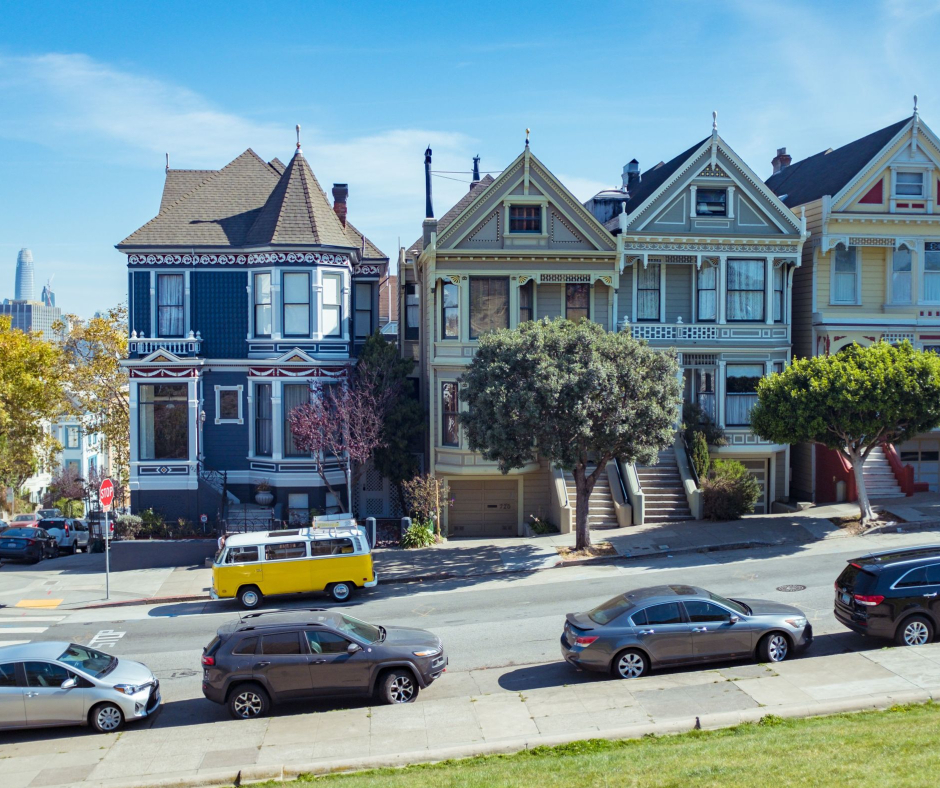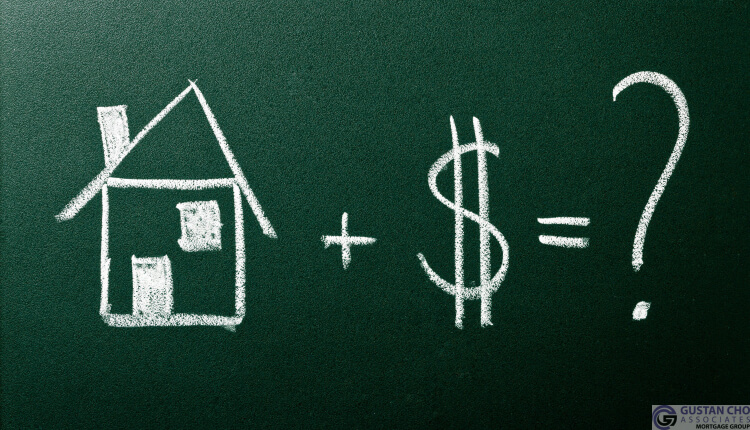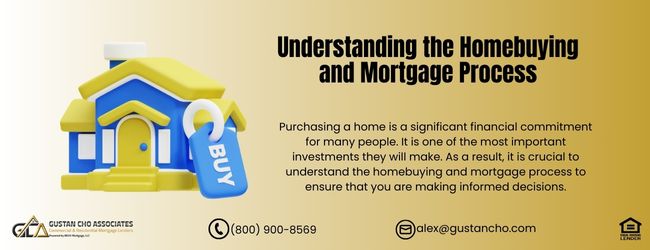Non-QM Loans After Bankruptcy and Foreclosure

This guide covers getting qualified and pre-approved for non-QM loans after bankruptcy and foreclosure. The housing market has been bullish since 2013. Since 2013, housing prices have been skyrocketing year after year. This holds true with poorly managed high-taxed states like Illinois, New York, and California. Both HUD and the Federal Housing Finance Agency (FHFA) have been increasing FHA and Conforming loan limits year after year due to skyrocketing home prices. The coronavirus outbreak further stimulated housing sales despite the high unemployment rate. Historic low rates have surged homebuyer demand. In this article, we will cover non-QM loans after bankruptcy and foreclosure.
Getting Approved For Non-QM Loans After Bankruptcy and Foreclosure
Homebuyers can qualify for a mortgage after bankruptcy and foreclosure. However, until recently, the only loan program homebuyers could get approved for a home loan after bankruptcy and foreclosure were government and conventional loans. Unfortunately, both government and conventional loans have a mandatory waiting period after bankruptcy and foreclosure. The 2008 Real Estate and Mortgage Collapse left countless Americans filing bankruptcy and/or undergoing a housing event. The real estate market has not only recovered but home prices are surging nationwide. The waiting period after bankruptcy and/or housing event mandated by HUD, VA, USDA, Fannie Mae, and Freddie Mac left countless potential homebuyers out of the market.
FHA vs Non-QM Loans After Bankruptcy and Foreclosure
The United States Department of Housing and Urban Development, also known as HUD, is the parent of FHA, has lenient mortgage guidelines. However, there is a two year waiting period after bankruptcy and a three year waiting period after a housing event on FHA loans. FHA loans are the most popular loan program in the United States. HUD experimented with shortening the waiting period after bankruptcy and/or housing event to one year with the now-defunct FHA Back To Work Mortgage Program. This new HUD loan program turned out to be a complete disaster. We will cover the HUD FHA Back To Work Mortgage Program so our viewers are familiar with how the program worked. Non-QM loans does not have waiting period after bankruptcy and foreclosure. However, non-QM loans have larger down payment requirements. Down payment requirements on non-qm loans after bankruptcy and foreclosure is between 10% to 30%. The down payment requirements depends on the longevity of the bankruptcy and/or housing event, borrower’s credit scores, and the borrower’s number of compensating factors.
The Launch Of Non-QM Loans After Bankruptcy and Foreclosure
The Great News is that NON-QM Mortgage was launched in 2013. More and more non-QM loan programs were launched every year. NON-QM Mortgage Guidelines have no waiting period requirements after housing events such as a prior foreclosure, deed in lieu, and short sale. Borrowers with a prior bankruptcy can qualify for NON-QM Mortgage with no waiting period if they do not have a mortgage part of Bankruptcy. With the mortgage part of bankruptcy, then there is no waiting period after bankruptcy with NON-QM Mortgage Loans.
The Ill-Fated FHA Back To Work Mortgage
The creation of FHA Back To Work Mortgage by HUD was to shorten the waiting period to one year after a bankruptcy, foreclosure, deed in lieu of foreclosure, and short sale. The traditional waiting period to qualify for FHA Loans after Chapter 7 Bankruptcy is two years from the discharge date. There is a three-year waiting period after a foreclosure, deed in lieu of foreclosure, and/or short sale to qualify for an FHA Loans. This mortgage loan program is a manual underwrite mortgage loan program. Had strict mortgage lending guidelines and it was not for everyone. To qualify for this one year after a bankruptcy and/or foreclosure mortgage program borrowers needed to have been out of work. Due to being out of work, this was a reason for them filing bankruptcy and/or having a housing event. Lenders who were participating were extremely careful to make sure borrowers met guidelines set forth by HUD. Remember that all of these applications are manual underwrites. The mortgage underwriter needed to follow the Mortgagee Letter from HUD. There were many underwriter’s discretion issues and the guidelines were not clear. Just because one underwriter denies a mortgage application does not mean another underwriter will deny. I had half a dozen cases where I got denied from one mortgage lender but got it approved by a different underwriter.
Case Scenario Where One Lender Denies Back To Work And Another Lender Approves
Here is how HUD structured the FHA Back To Work Mortgage :
To qualify borrowers needed to have been either laid off. Or, the company needed to have shut down causing forced unemployment or underemployment and due to the unemployment. Borrowers were forced to either file bankruptcy, have a foreclosure, deed in lieu of foreclosure, or short sale due to at least a 20% reduction of household income for at least six months. A voluntary resignation or quitting a job disqualified borrowers. Reduction of income due to divorce or other extenuating circumstances disqualified borrowers. A self-employed person whose business went out of business due to the economy did not qualify because HUD views a failed business as a calculated risk. The only way borrowers qualified was if terminated from their employer. Proof of involuntary termination was required.
Cases Scenario on FHA Back To Work Mortgage
A recent case scenario of a loan that I closed for a borrower was when I took on a file where a borrower lost his job due to the employer not extending his employment contract.
- The Back to Work mortgage underwriter did not view this as an involuntary termination
- I disagreed with the underwriter’s decision
- The underwriter will not budge and stayed firm with his denial
- I then took the file to a different wholesale lender
- That underwriter agreed that my client’s not getting an employment contract renewed fit the FHA Back To Work Mortgage Guidelines
- This being the cause of his unemployment qualified him for the Back to Work extenuating circumstances due to an economic event mortgage loan
- The borrower eventually got his mortgage approved and we ended up closing on the loan
- Again, just because one mortgage underwriter does not felt that an applicant did not meet the mortgage lending guidelines of the Back to Work Mortgage program did not mean a different underwriter will not approve the loan
Again, this loan program was a total failure.
FHA Back To Work vs Non-QM Loans After Bankruptcy and Foreclosure
Credit report and credit history will be scrutinized by mortgage underwriters:
- Borrowers were expected to have had perfect credit prior to his or her unemployment
- Late payments prior to his or her unemployment disqualified borrowers
- Once the mortgage applicant became unemployed, late payments and bad credit is expected and a credit score drop is also expected
- However, once the FHA Back to Work Mortgage loan applicant gets a new job, the mortgage loan underwriter expects the applicant to have no more late payments and re-established credit
- One late payment after the mortgage loan applicant re-establishes themselves can be a deal-breaker
Housing Counseling
To qualify for the FHA Back To Work, A HUD-approved housing counseling course needs to be completed for all mortgage loan applicants for this program and they cannot apply for an official mortgage loan application until 30 days after the signed completion date of the housing certificate.
Qualifying For Non-QM Loans After Bankruptcy And Foreclosure
The FHA Back To Work Mortgage program was a complete disaster. Only a fraction of borrowers who applied for this loan program were successful and got a clear to close and closed on their home loans. An alteative to this loan program is NON-QM loans. GCA FORUMS Mortgage Group offers NON-QM loans after bankruptcy and foreclosure with no waiting period after bankruptcy or housing event. A housing event is one of the following events:
- Foreclosures
- Deeds-in-Lieu of Foreclosure
- Short Sale
Non-QM loans after bankruptcy and foreclosure require a higher down payment. Depending on the borrower’s credit scores, a 10% to 30% down payment on non-QM loans after bankruptcy and foreclosure. Besides a larger down payment, non-QM loans have higher mortgage rates. Rates are slightly higher than FHA loans. However, non-QM loans after bankruptcy and foreclosure can be a great alternative for homebuyers who have not met the waiting period after bankruptcy and foreclosure.
Frequently Asked Questions on Non-QM Loans After Bankruptcy and Foreclosure
Below are some Frequently Asked Questions (FAQs) on Non-QM Loans After Bankruptcy and Foreclosure:
What does a Non-QM loan entail?
Answer:
- Non-Qualified Mortgage or Non-QM loans refer to a type of mortgage loan that does not comply with the Qualified Mortgage Guidelines.
- Non-QM are alternative loan programs originated and funded by portfolio lenders.
- The Consumer Financial Protection Bureau of the United States (CFPB) regulates residential mortgage loans.
- With non-QM loans, lenders can have greater latitude in evaluating nonconforming borrowers to certain basic lending restrictions.
- Such as an adjudged bankrupt, a foreclosed constituent, or some special income earners like self-employed people.
Is a Non-QM Loan Available When One is Bankrupt?
Answer:
- Yes, non-QM loans have such relaxed criteria regarding those requirements and may even permit getting a mortgage within a few months of accruing bankruptcy.
- Some non-QM loans have been observed to last for one day after Bankruptcy discharge.
When is the Shortest Time Frame for Acquiring Non-QM Loans After Bankruptcy and Foreclosure?
Answer:
- Unlike traditional loans, which may require 3-7 years after a foreclosure, you can qualify for non-QM loans with no waiting period after foreclosure.
- Non-QM loans can be obtained one day after foreclosure.
- However, this will determine your credit score and overall financial profile with the lender.
What Non-QM loans After Bankruptcy and Foreclose Can a Borrower Borrow?
Answer: Non-QM loan options include:
- Full doc non-QM loans after bankruptcy and foreclosure
- Self-employed individuals look to bank statement loans for self-employed borrowers.
- Income verification is done using bank statements instead of tax returns.
- DSCR loans on rental properties.
- DSCR loans are generally lent to investors in the real estate sector.
- By design, they are covered only by the rent lost, not the borrower’s income earnings.
Is There a Minimum Credit Score for Non-QM loans After Bankruptcy and Foreclosure?
Answer:
- Non-QM loans are often liberal in terms of credit score requirements.
- For illustration, while certain lenders would have recommended that the score be equal to 620 to 660, other lenders would even approve loans to borrowers whose credit scores are only between 500 and 580.
- However, the lower the credit score, the higher the down payment requirement.
- The lower the credit score, the higher the interest.
Mortgage Rates on Non-QM Loans After Bankruptcy and Foreclosure?
Answer:
- Interest rates charged on non-QM loans are usually more expensive than the interest on ordinary loans.
- This is because of the high risks presented to the lender.
- Remember, if you have recently gone through bankruptcy or foreclosure, you will most likely get higher-than-average rates.
- However, such rates are still better than those of hard money loans.
- The rates will also depend on your credit score, the down payment, and the lender’s rules.
What is the Down Payment for Non-QM Loans After Bankruptcy and Foreclosure?
Answer:
- The payment of certain minimum percentages with most lenders will vary between 10% and 30% for Non-QM loans.
- Particularly because of circumstances presented from case to case.
- People with new foreclosures and bankruptcies are likely to put larger down payments of 20-30% or thereabouts to mitigate the lender’s exposure to risk.
Do Non-QM Loans Have Prepayment Penalties?
Answer:
- Several Non-QM loans contain prepayment penalties, which state that you will incur some charges if you terminate the loan before the settlement.
- This depends on the lender.
- So, the terms must be thoroughly checked.
- Most borrowers typically use Non-QM loans as a bridge lo loan until they can qualify for traditional loans.
How will Bankruptcy or Foreclosure History Affect Ability to Get a Non-QM Loan Approval?
Answer:
- Although Non-QM loans are available to people who have experienced bankruptcy or foreclosure, the event will determine how much scrutiny lenders will put on your financial comeback afterward.
- Lenders will be primarily interested in your present earnings and net worth and the money to be borrowed and repaid.
Can I Later Convert the Non-QM loan to a Conventional Mortgage?
Answer:
- Many borrowers have used non-QM loans as a stop-gap solution post-bankruptcy or foreclosure.
- The intent is to first qualify for non-QM loans and later refinance into a conventional loan once they meet traditional lending requirements.
- After you build a positive credit history and stability in a few years, you can obtain a traditional loan with more favorable conditions.
What are the Documentation Requirements For Non-QM Loans After Bankruptcy and Foreclosure?
Answer:
- The documentation requirements for obtaining a Non-QM loan are usually less strict than those for traditional loans.
- Non-QM loans assist borrowers, especially in purchasing owner-occupant homes, second homes, or investment properties, even after periods of bankruptcy or foreclosure.
- Non-QM loan products like bank statement loans, and DSCR loans are tailor-made for property investors who seek the cash flow from the property rather than the borrower’s employment or creditworthiness.
What Should I Expect Applying for a Non-Qualified Mortgage (Non-QM) Loan?
Answer:
- The Non-QM process can sometimes take longer than traditional loans.
- Lenders may have to review alternative documents, and some risks may require further analysis.
Expect:
- A thorough assessment of your financial status as of the moment.
- Borrowers can qualify for bank statement loans if you are a self-employed borrower.
- There are more stringent property requirements and appraisals regarding rental income possibilities.
- However, the process can go more smoothly with patience and clear communication with the lender.
Can I Get a Non-QM Loan Without Completing a Chapter 13 Bankruptcy?
Answer:
- You can qualify for a Non-QM loan after Chapter 13 bankruptcy discharge.
- You cannot qualify for non-QM loans during the Chapter 13 Bankruptcy repayment plan.
Is it True Non-QM loans Can Be Obtained in Every State?
Answer:
- Yes, non-QM loans are largely present in all states in the U.S.
- However, the extent they are available will depend on the state and the individual lenders.
- It is essential to deal with a lender who understands the regulations and products concerning non-QM loans in a specified state.
- Non-QM loans represent a way out for people discharged due to bankruptcy, foreclosure, or other difficulties but are willing to re-enter the homeownership or investment properties ring.
- With less stringent requirements, these loans will enable you to bounce back faster than the other mortgage loans.
Nonetheless, one should remember that high interest rates, higher down payments, and other limitations imposed by the lenders are inescapable when getting a Non-QM mortgage.






Responses